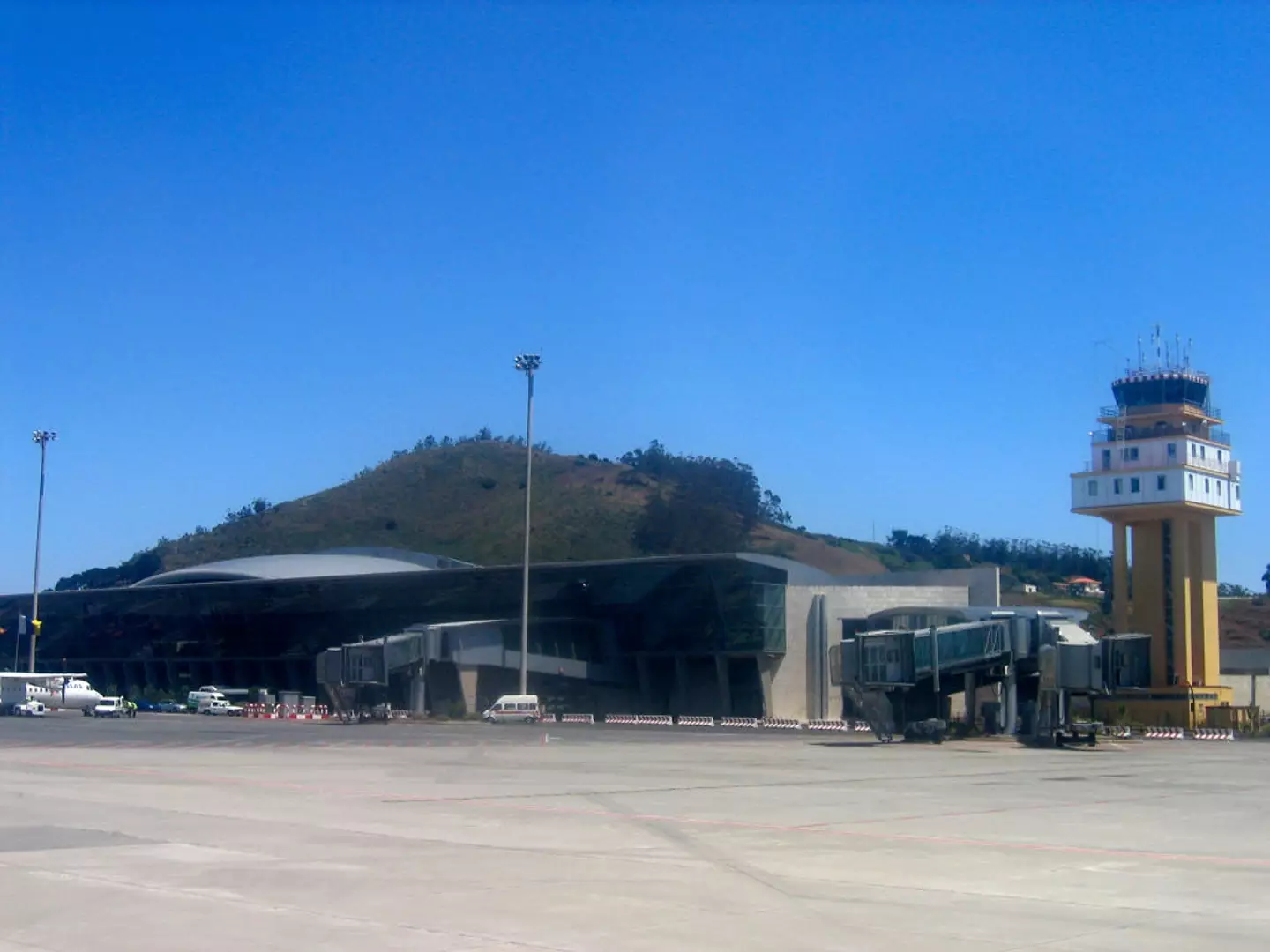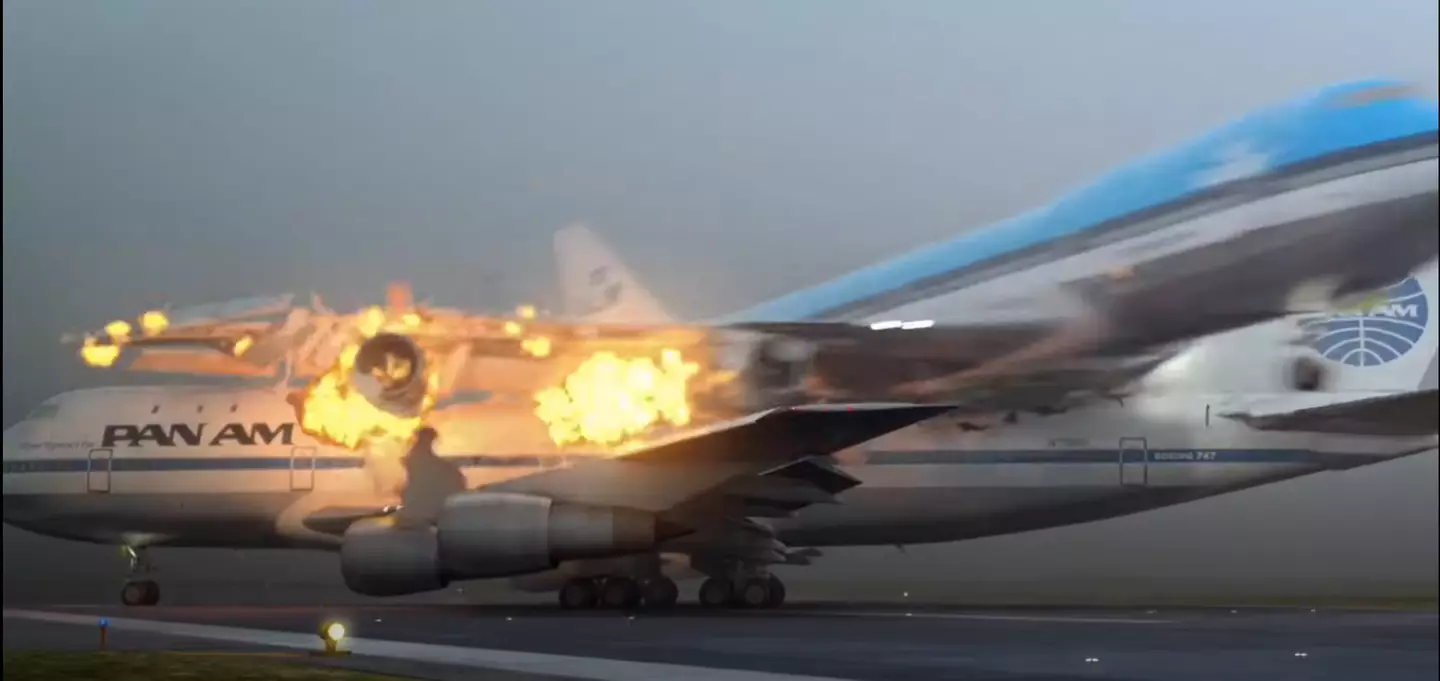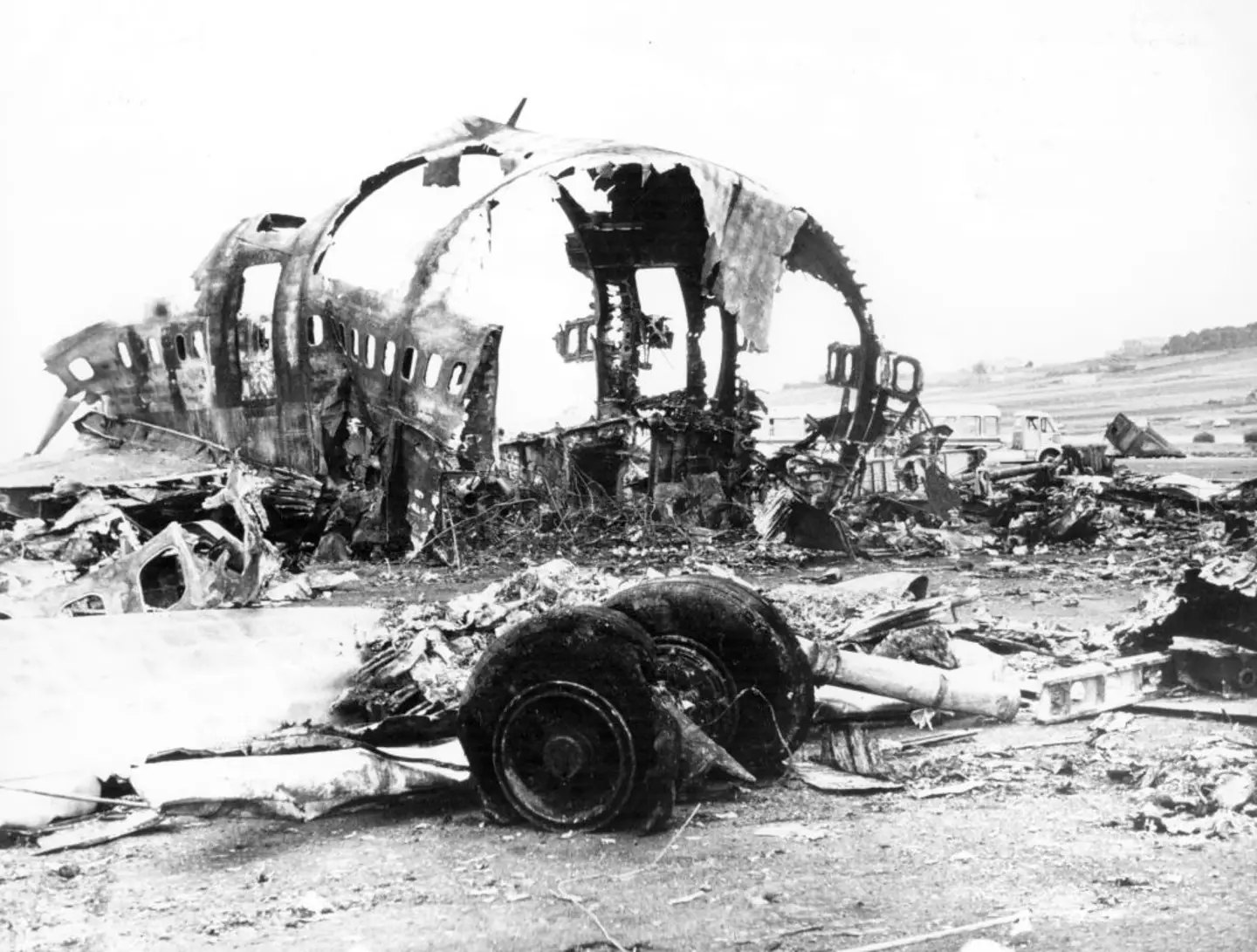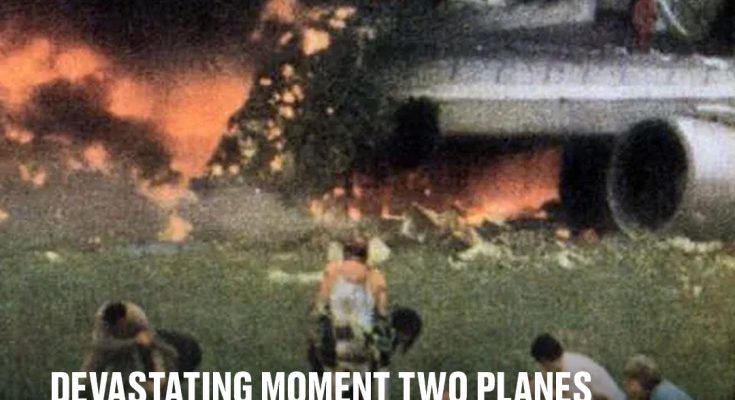Two planes that collided with each other in the middle of the runway in 1977 became known as the deadliest air accident in history, killing over 200 people.
On 27 March, the Atlantic island of Tenerife was rocked by a devastating crash at a small airport in the north of the island.
After believing they had been given clearance for take-off, KLM flight 4805 began hurtling down the runway at Los Rodeos Airport – now known as Tenerife North -, completely unaware that Pan Am Flight 1736 was yet to clear the runway.
What happened next was a devastating accident, which changed aviation history forever.

Tenerife’s Los Rodeos Airport, photographed in 2005 (Fernando Camino/Cover/Getty Images)
Poor weather conditions meant that KLM pilot Jacob Veldhuyzen van Zanten and first officer Klaas Meurs were unable to see the exact location of the Pan Am flight.
After mistakenly believing they had been given clearance to take off, van Zanten sent the KLM hurtling down the runway and straight into the Pan Am plane, which hadn’t finished taxiing off the runway.
By time the pilots of both aircraft realised the gravity of the situation they were in, it was too late.
“Look at him! Goddamn, that son of a b***h is coming,” Pan Am pilot Victor Grubbs yelled as they turned sharply and made a frantic attempt to clear the KLM’s path, to which first officer Robert Bragg replied: “Get off! Get off! Get off.”
The KLM aircraft would slam ultimately into the side of the side of the Pan Am as it attempted to take off prematurely.
The Dutch plane would remain airborne momentarily, before the impact of the crash caused the plane to stall and collide with the runway 150m (500 ft) further down from the Pan Am.
Recalling the aftermath in an interview with BBC Witness in 2016, Bragg said: “I then looked up for the fire control handles and that’s when I noticed the top of the airplane was gone.”

A simulation recreating the moment both planes collided (YouTube/National Geographic/Air Crash Investigation)
Flight 4805 had also been carrying a fuel tank of fuel, which swiftly ignited into a fireball and killed all 248. The only ‘survivor’ of the flight was Robina van Lanschot, a passenger who had disembarked after landing at Los Rodeos Airport.
Meanwhile, the Pan Am had been severely damaged by the collision. Everyone sat on the upper deck of the aircraft was instantly killed upon impact.
Thankfully, 61 passengers – including the pilots – were able to escape from the burning aircraft before the fuel tank blew up.
Subsequent investigations would determine that poor weather conditions, combined with a miscommunication between air traffic control and the KLM, were responsible for the crash.
This lead to a creation of standardised language used by pilots and ground crews in order to minimise any future misunderstandings.
Perhaps one of the more chilling parts of the collision was that neither of the planes were scheduled to make a stop in Tenerife at all.

The crash was the deadliest in aviation history (Central Press/Getty Images)
Both the KLM and Pan Am flight had been diverted to Los Rodeos Airport after a terrorist incident at their intended destination of Gran Canaria.
Earlier in the day, a bomb had been planted in the terminal of the island’s airport by the separatist Canary Islands Independence Movement, which injured eight people after it exploded.
Due to a threat of a second explosion, all flights bound for Gran Canaria were forced to reroute to the Los Rodeos, with the small airport quickly becoming overwhelmed with aircraft. The pilots onboard the Pan Am had even requested to stay circling their original destination until receiving landing clearance, but this request had been denied.



